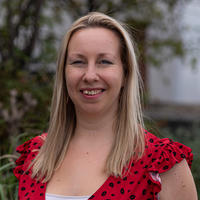Diversity and Inclusion on our Training Programme 2021/22
A snapshot report on current key diversity statistics for our Training Programme.
At Teach First we believe by building a fair education for all, we are building a future workforce that truly reflects our diverse society. Here we present another snapshot of our current diversity statistics from our Training Programme. Diversity is important, both to attract and retain a range of talented trainees, and to ensure that those trainees reflect the communities they serve.
We continue to transparently monitor diversity and inclusion across our recruitment processes and the programmes we run. We want to ensure no one is disadvantaged because of who they are or their background. We committed to regularly publishing reports on our programmes. We do this so we - and you - can see, how we’re doing and how we can improve. Everyone deserves equal opportunity to access a good education – that’s true of our pupils, but also the teachers and leaders we train. Ensuring equality of opportunity means we can realise everyone's full potential, which in turn powers our economy and strengthens society.
Who are our trainees?
Below are the characteristics of our Training Programme trainees, in comparison to the pupils at our partner schools and the wider national teaching workforce.
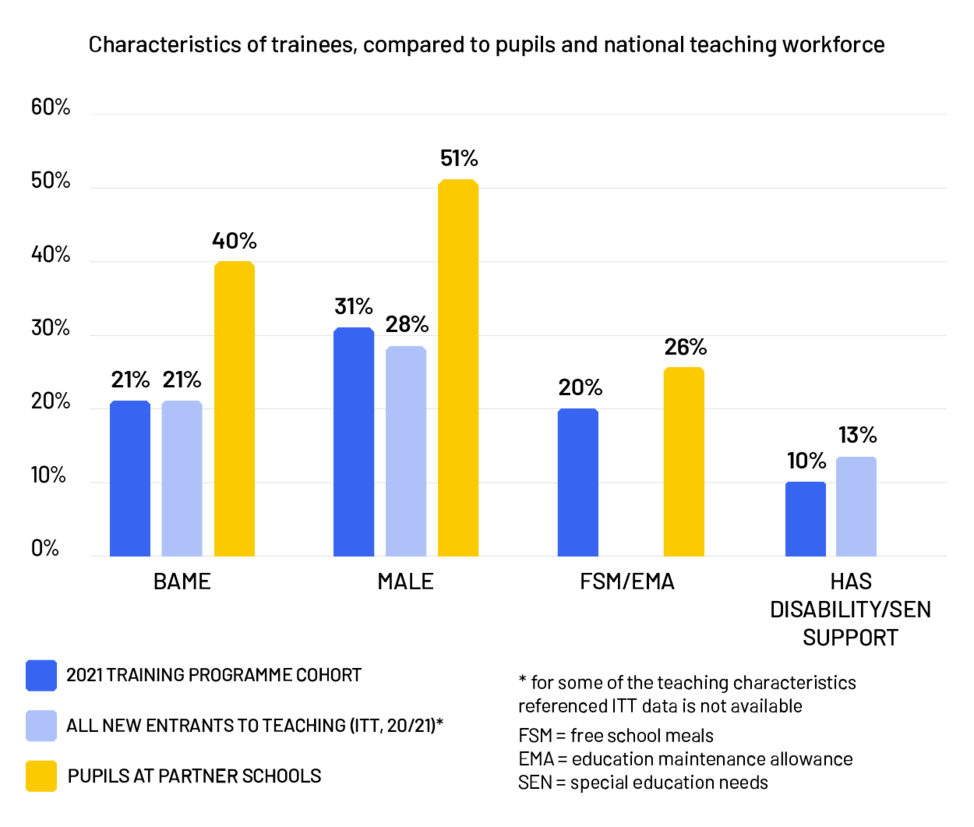
From our 2021 Training Programme cohort, 21% of trainees are from a BAME background. This is lower than the percentage of BAME pupils in our schools (40%) but the same as new entrants to teaching as a whole (21%). These characteristics also vary by region - for example, we know that London has a higher concentration of teachers and pupils from a BAME background.
Of the 2021 cohort, 31% of trainees are male. The pattern is similar to new entrants to teaching as a whole, with men (28%) underrepresented in the profession when compared to the general population.
Of pupils in our partner schools, 26% are eligible for free school meals. This is higher than our 2021 cohort (20%) who say that when they were at school they were eligible for Free School Meals (FSM), Education Maintenance Allowance (EMA) or both.
Some 10% of our 2021 Training Programme cohort have some form of disability, which is similar to the new entrants to teaching as a whole (13).
How have the characteristics of our trainees changed over time?
Below are the characteristics of our trainees by demographic group and ethnic group.
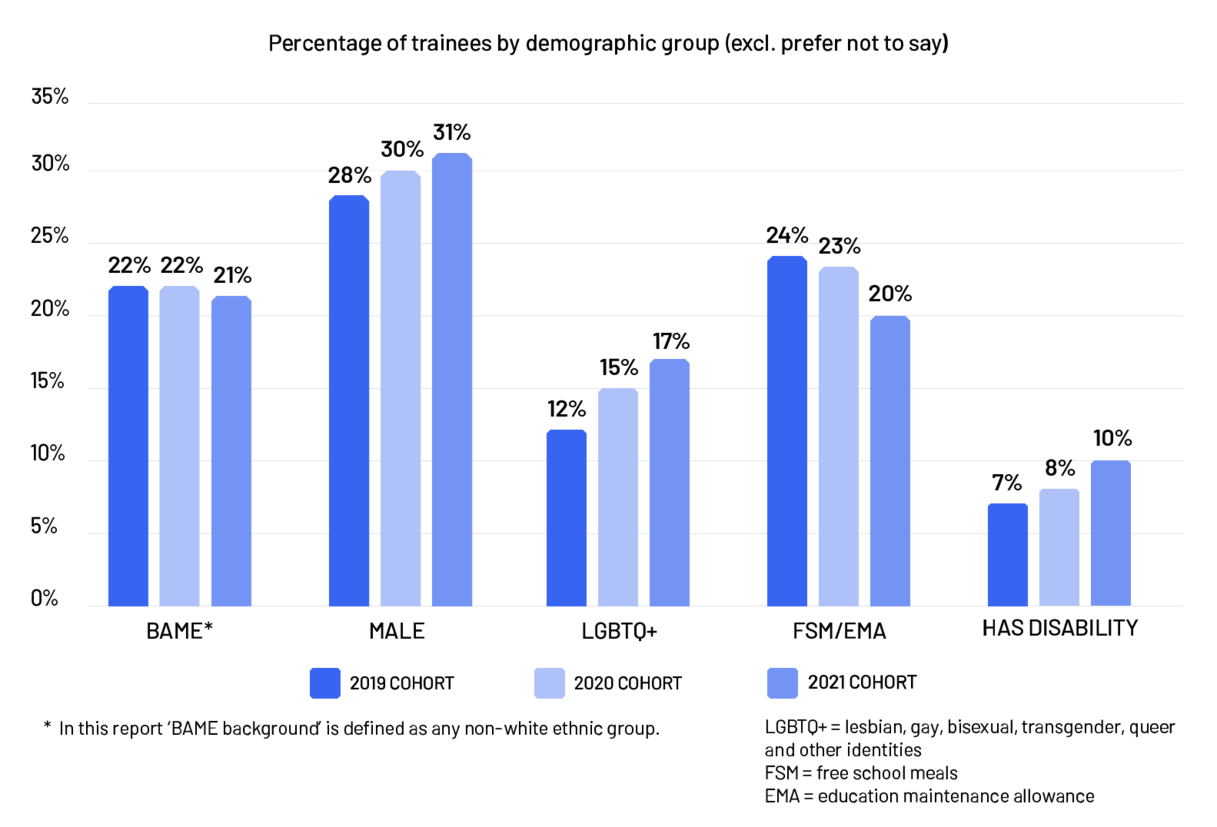
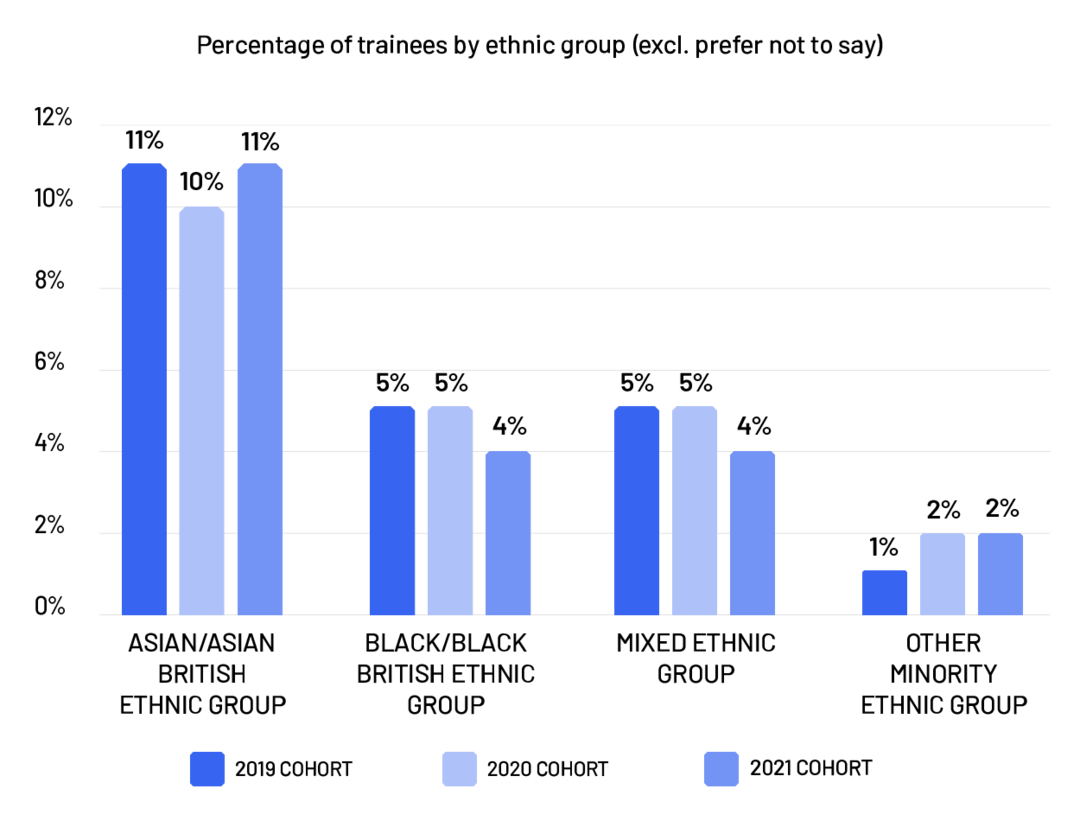
The characteristics of our trainees vary between cohorts. In comparison to the 2020 cohort, the 2021 cohort has a higher level of trainees who identify themselves as LGBTQ+ and with a disability. However, a lower level of trainees were eligible for FSM, EMA or both when they were at school.
The proportion of BAME trainees remains relatively stable over the past three cohorts.
Who are we recruiting and retaining?
Below are the characteristics of successful applicants to our Training Programme, and those who have gone on to complete the full programme.
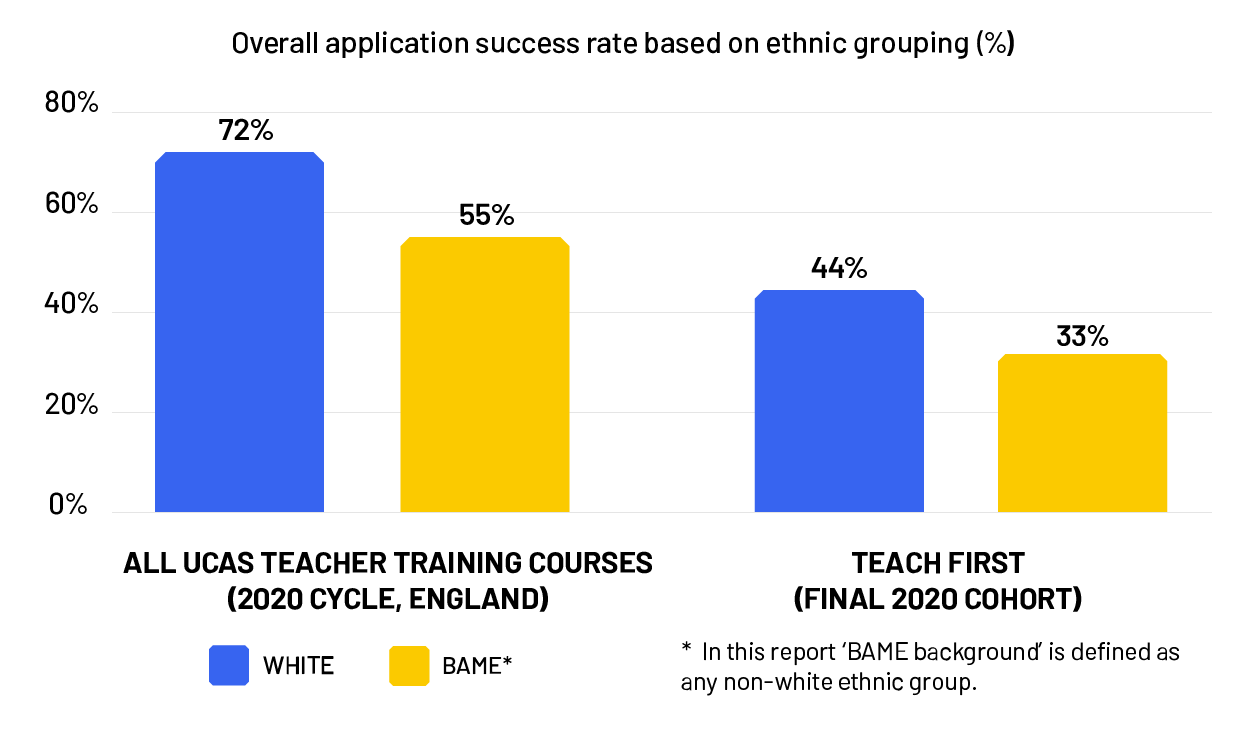
How likely applicants are to be successful to join the Training Programme can vary based on a wide range of different factors. For the 2021 cohort, the overall application success rate was higher for applicants from a white background than those from minority ethnic groups (with the exception of those from a mixed race ethnic background who had the highest application success rate).
This is a similar pattern as we see across applications to post-graduate ITT courses as a whole (UCAS data, 2020) whereby applicants from minority ethnic backgrounds (in particular Black backgrounds) have a lower acceptance rate than white applicants.
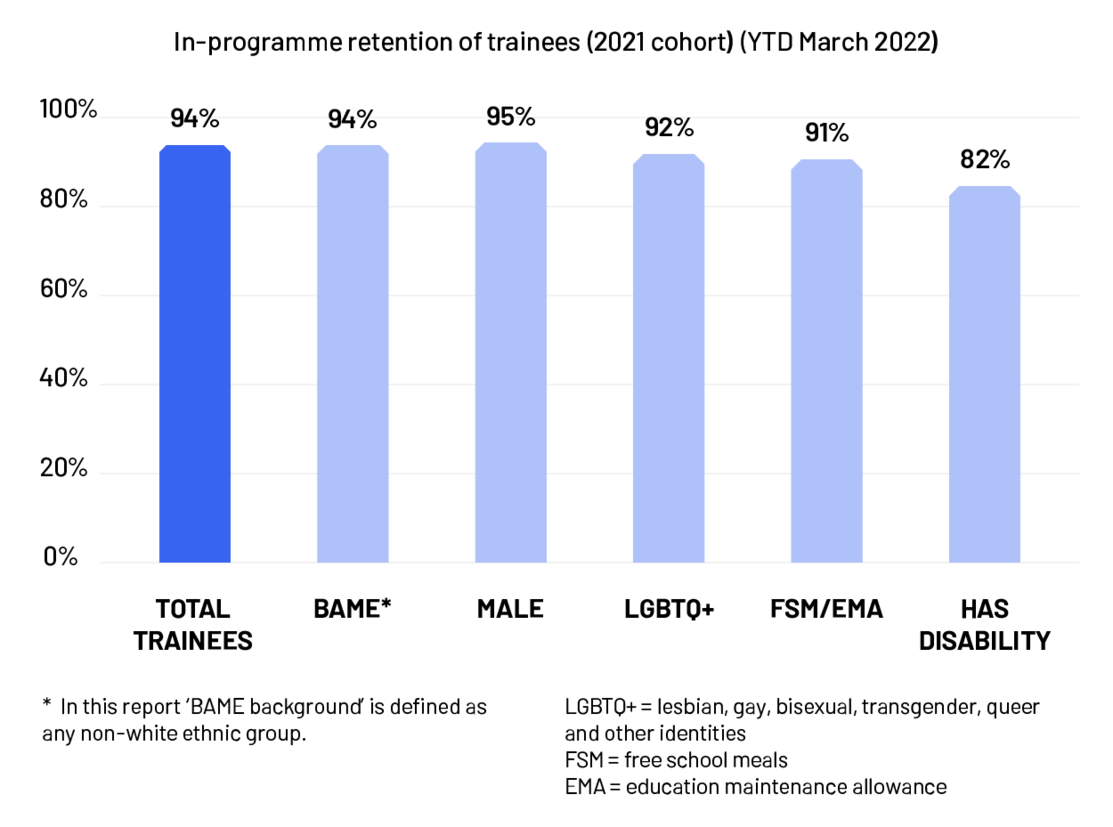
Once on the programme there is no significant difference in the retention of trainees in most of their demographic characteristics, except those with disabilities.
We are taking steps to better understand and address why such discrepancies exist in our application and retention process, including analysis to explore the other factors which may influence application outcomes and how they relate to demographic characteristics.
Who completed the Training Programme?
Below are the characteristics of our Training Programme ambassadors.
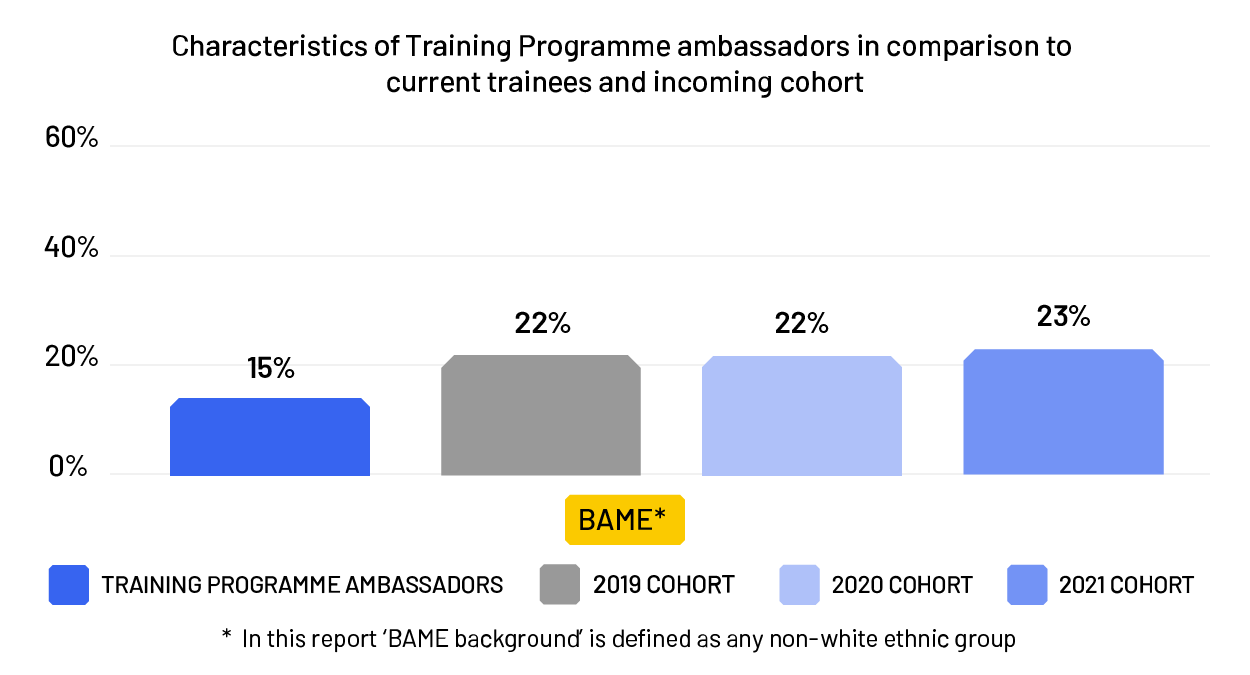
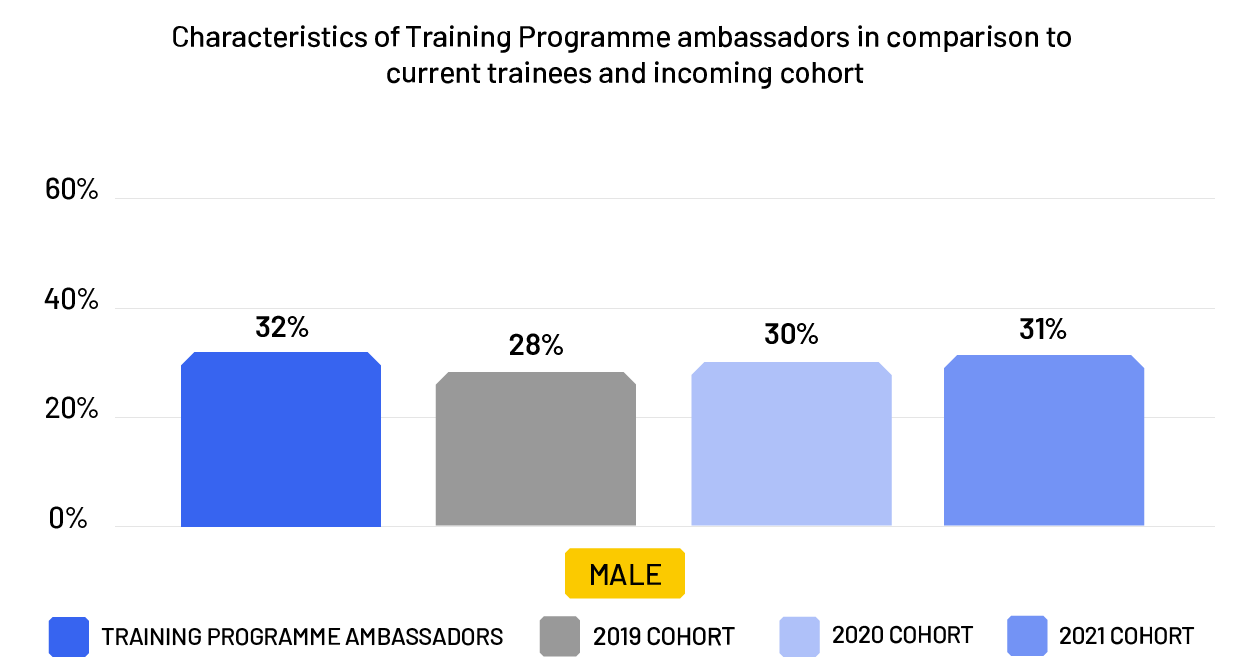
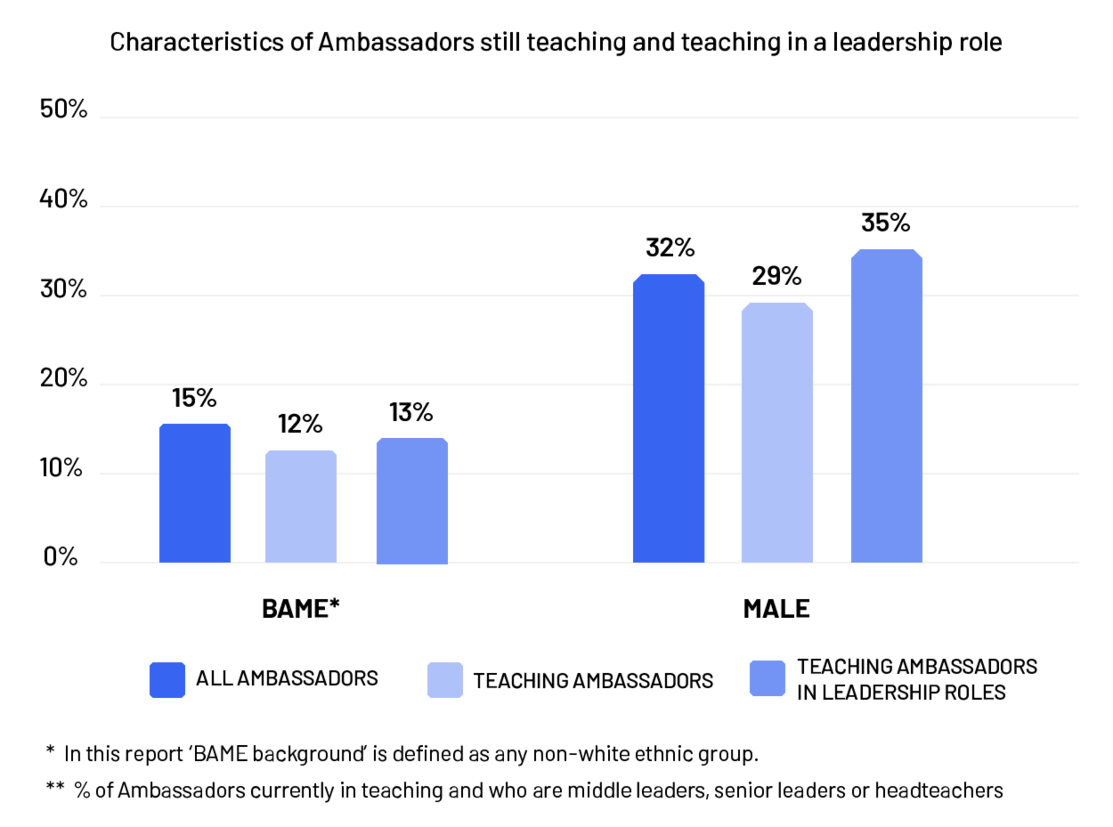
In comparison to the 2019-2021 cohorts, Training Programme ambassadors are less likely to come from a BAME background. This reflects that trainees on the programme have become more diverse over time.
Of our ambassadors, 12% still teaching were BAME, compared to 10.5% of the national teaching workforce as a whole and 14% of the general population.
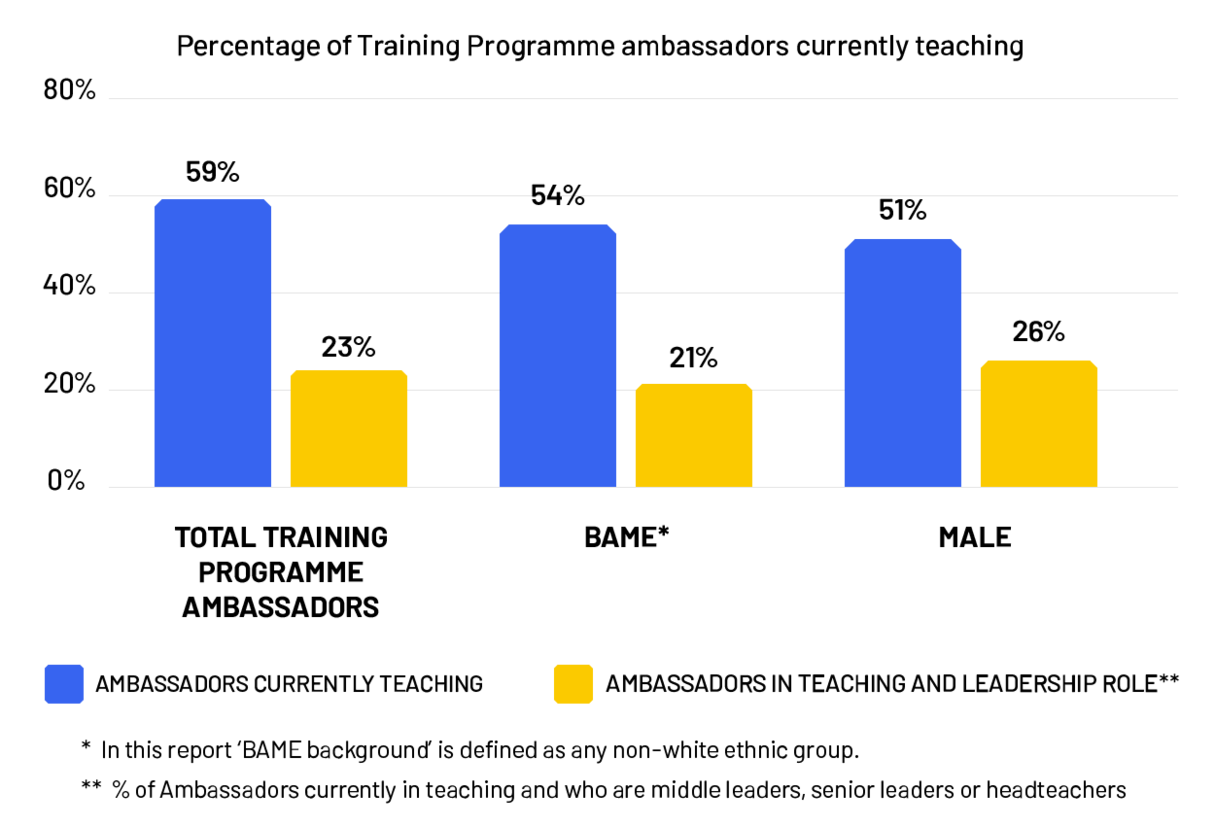
In comparison to all Training Programme ambassadors, ambassadors from a BAME background are less likely to be still in teaching, and slightly less likely to be teaching in a leadership position.
Male ambassadors are less likely to still be teaching, but if they are still teaching they are more likely to be in a leadership position.
Next steps
To improve equity, diversity and inclusion across our programmes and in the sector, we will continue with the activity we have been progressing with over the last year. This includes:
- increasing representation from underrepresented groups on all our programmes with targeted support for aspiring leaders from underrepresented backgrounds
- ensuring support is available for programme members from all backgrounds so they are able to thrive, through effective systems for managing EDI incidents and increasing the capability of staff to support programme members from all backgrounds
- ensuring our school partnership strategy continues to focus on providing a supportive training environment for programme members, and matching trainees to schools whilst considering their needs if from underrepresented groups
- reviewing our recruitment processes to ensure inclusion and accessibility
- carrying out analysis to consider whether personal characteristics impact the application process while statistically controlling for other factors (such as region or Russell Group attendance)
- developing new processes so that diversity and inclusion data is collected consistently across all our programmes
- replicating this analysis for all programmes so that we can compare diversity and inclusion outcomes for different areas of work
- ensuring our digital systems are accessible to all
- embedding further EDI content into our programme curriculum to increase the number of programme members who feel equipped to take actions to support equity, diversity and inclusion.
We will use our data to measure the impact of this activity and continue to be transparent in sharing our EDI data.
Find out more about our work on the Diversity and Inclusion hub.
